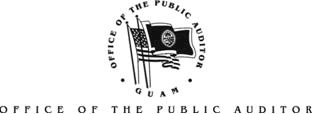
FY 2004 Financial Highlights
July 7, 2005
For the fourth-consecutive fiscal year, Guam Community College qualified as a low risk auditee, as there were no questioned costs or unresolved prior year audit findings. GCC’s fiscal year 2004 financial statements, prepared by Deloitte & Touche reported an increase in net assets of $823,779 a decrease compared to the $1.5 million in the prior year.
GCC’s revenues for the fiscal year were $21.9 million compared to $21 million from 2003. The Government of Guam continues to be the major source of revenue for the college as Government of Guam appropriations made up 57 percent of GCC total revenue for the year ($12.5 million versus $12.2 million). Other major revenue sources were derived from student tuition $2.8 million (versus $2.3 million); Federal grants and contracts $5.6 (versus $5 million); and local government grants and contracts $454,000 (versus $351,000).
The increase in revenues from student tuition was a result of enrollment figures for fall, spring, and summer increasing from 8,624 to 11,378. The enrollment figures increased because of the 2,912 more students enrolled in special projects. The head count for regular academic courses decreased by 158 from 4,319 to 4,161.
Although revenues increased by $870,000, it was offset by the overall increase in operating expenses of $1.6 million. FY 2004 expenses totaled $21 million compared to the $19.5 million in FY 2003. Contributing to the increase in expenses were the increases of $553,000 in institutional support, $304,000 in student services, $148,000 in auxiliary enterprises, and $736,000 in bad debts expense. The allowance for bad debts in the prior year may have been understated. Therefore, GCC increased its allowance for doubtful accounts from 9 cents ($154,000) on the dollar to 42 cents ($889,000) on the dollar.
Over the years GCC has diligently accumulated $9.9 million in unrestricted net assets, which are available at management’s discretion with board approval. However, GCC has noteworthy challenges. The college committed to a $3 million loan for the construction of a new dormitory. Due to severe damage sustained from Supertyphoon Pongsona, the college dormitory was converted to the administrative offices. The Administrative building has been occupied under a temporary permit due to GWA’s inability to provide adequate water pressure to the fire alarm sprinkler system.
Because of the lack of adequate water supply, GCC had to commit to a $440,000 loan with the United States Department of Agriculture to finance the construction of a water pump. The college will make monthly installments of $2,755 for a term of twenty years. The administration building is currently awaiting a Guam Water Authority certificate of occupancy.
The $3 million loan the U.S Department of Education granted to GCC was originally intended for the construction of a college dormitory. Because of unforeseen circumstances the building had been converted to the Administrative Offices. Therefore it is unknown at this time if U.S. Department of Education will call the loan given to GCC for construction of the dormitory. As of September 30, 2004 the college has a $600,000 receivable from the U.S. Department of Education.
Fiscal year 2004 marked the first year of reporting the GCC Foundation on the financial statements as required by government accounting standards. The Foundation recorded investment income of $649,000 and assets of $7.1 million.
The independent auditor’s report on compliance with laws and regulations noted two findings, none of which were considered to be material weaknesses. The findings were in activities allowed or unallowed, and special test and provisions. One finding unveiled overpayments of $1,962 to Pell Grant recipients; the overpayments did not become a cost questioned because GCC paid the overpayments from the college’s non-appropriated funds.
In a separate management letter three findings were identified, which
pertained to cash receipts issuance, travel documentation, and travel
policy.
For more detail see the Management Discussion and Analysis.